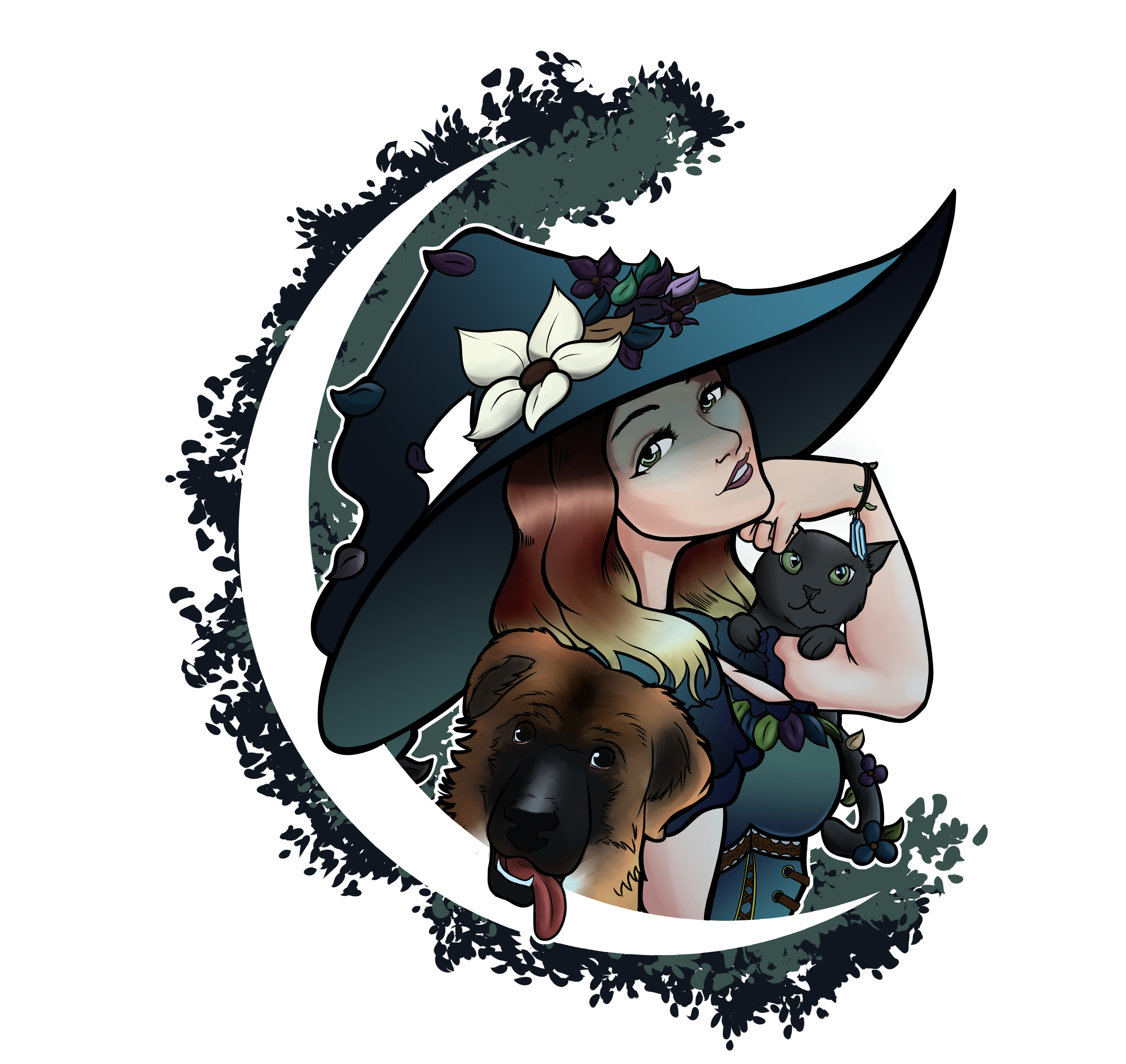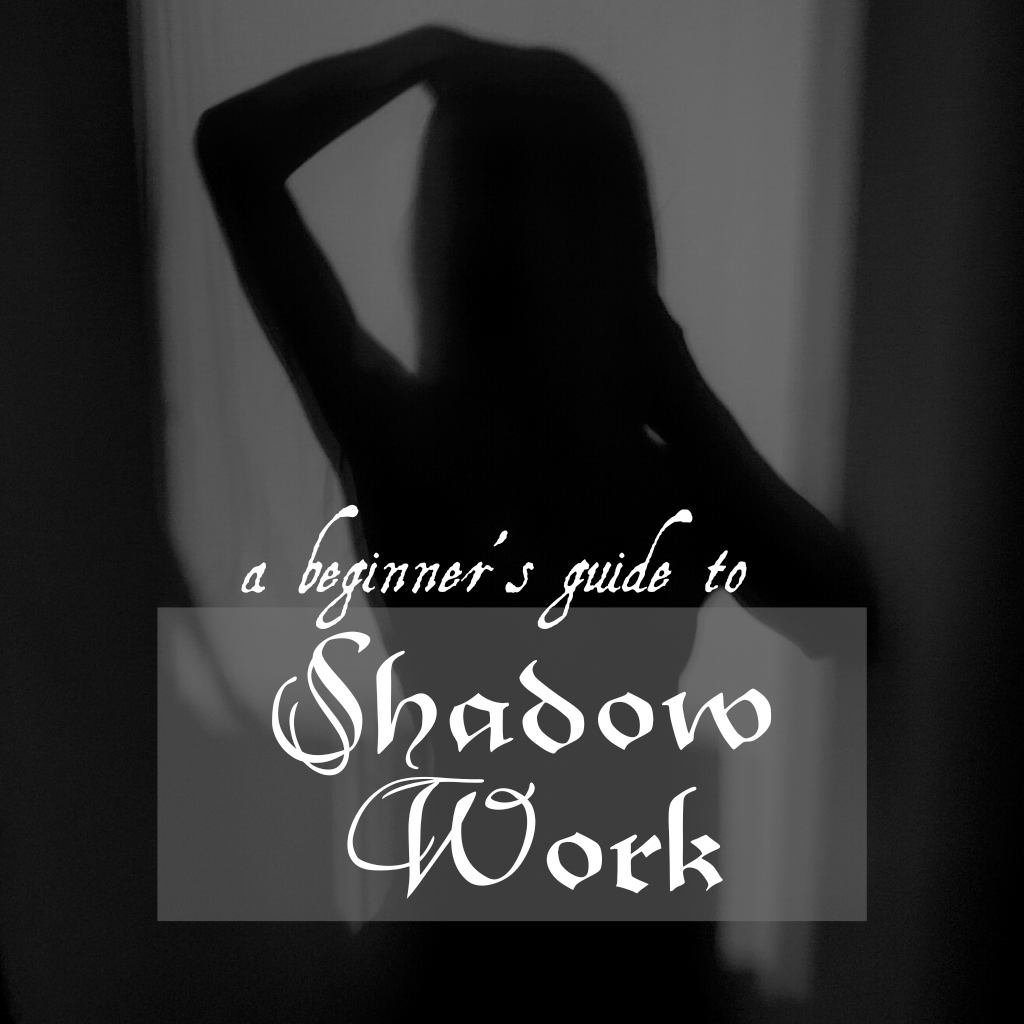Learn how to do Shadow Work and how it can benefit your Witchcraft practice! Learn what it is, the history, and how to do it yourself.
This post may contain affiliate links and I may earn a small commission when you click on the links at no additional cost to you! Thank you in advance for helping to support the site
What is Shadow Work?
Created by the psychoanalyst Carl Jung, shadow work is a type of psychotherapy that focuses on unveiling the hidden “shadow self” we each have inside of us. The goal of this practice is to have a better understanding of yourself and the experiences that have shaped you into the person you are; helping to facilitate internal growth, and healing. This is achieved by first acknowledging what emotions or feelings are being pushed away and not accepted, understanding why you have them, and then slowly accepting them as part of your true self.
What is the "Shadow" or "Shadow Self"
The term “shadow self” is representative of the things that we often hide from others, or repress within ourselves; this can include both negative behaviors such as fear, anger, or addiction, or positive ones such as inspiration or creativity. Much like the shadow we cast upon the ground, this shadow self is always with us, and most often ignored.
In Jung’s theories, he describes the psyche (referring to the mind) as a self-maintaining system of components that make up our “self”. The self being the whole of the psyche, in addition to its potential.

Components of the Self According to Jung
- The Persona
- how we portray ourselves to others
- The Ego
- how we perceive ourselves
- The Shadow
- what we subconciously hide
- The Animus/Anima
- The “masculine” & “feminine” archetypal influences that affect us
While we do always have this shadow self with us, certain events or interactions in our life might add or subtract to it as we go about our daily lives. A parent chiding you for crying, a peer laughing at your singing, or a rejection from a crush… all of these are circumstances that could be adding to the repressed Shadow.
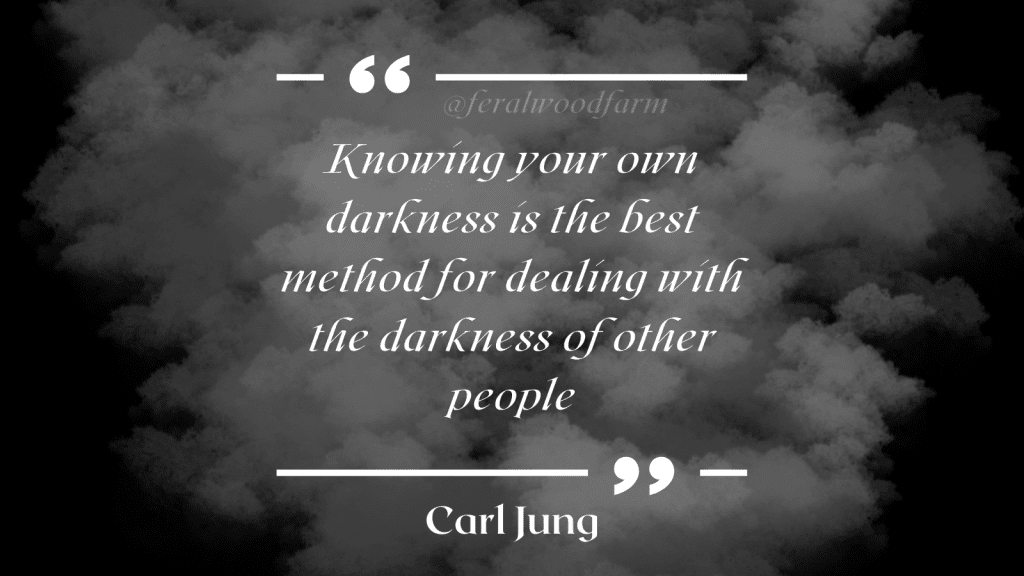
The History of Shadow Work
Who was Carl Jung?
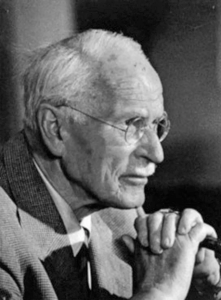
Not as well known as his collegue, and in many ways intellectual counterpart, Sigmund Freud; Carl Jung worked with, and studied under, Freud between the years of 1907 and 1912. and had many similar theories in regards to psychoanalytics. They later came to heavily disagree particular in reguards to the sexual desires of the unconcious, which inspired Jung to publish Wandlungen und Symbole der Libido (Psychology of the Unconscious, 1916).
After his split with Freud, Jung turned to focus more on dreams, fantasties, nad other parts of the brain that he considered to be the “irrational side of his nature free expression“. During this time he developed a theory that there is a form of the unconcious that is shared between mankind as a whole, thus creating the idea of the collective unconcious. This was also expanded upon later by literary critics basing theories on Jung’s writings, leading to the popularization of archetypes.
For Jung, the varieties of human experience have somehow been genetically coded and transferred to successive generations. These primordial image patterns and situations evoke startlingly similar feelings in both reader and author.
on “Archetype” – The Editors of Encyclopaedia Britannica
Some other of his most wellknown contributions are the terms introvert and extravert which were coined to classify people into two distinct types, those who were “inward-looking” and those who were “outward-looking”. He also differentiated the four functions of the mind into: thinking, feeling, sensation, and intuition; creating the basis for the very popular Myers-Briggs Type Indicator personality test.
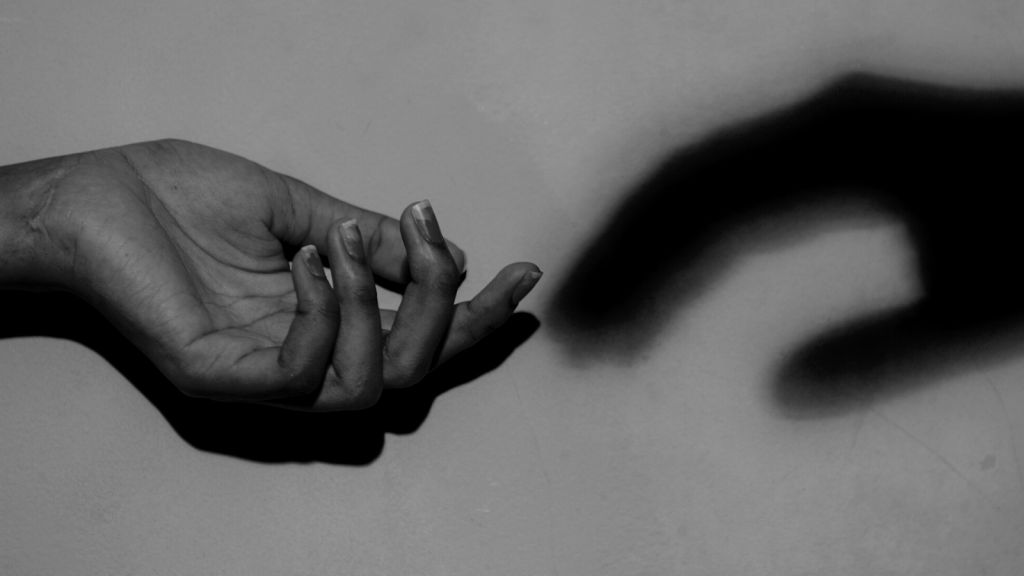
Other Historical Examples of Shadow Work
While Jung is known for bringing the concept of the shadow to public awareness in the modern day, this aspect of ourselves has long been recognized as a ubiquitous feature of human beings.
Academy of Ideas, Carl Jung and the Shadow: The Hidden Power of Our Dark Side
Although Carl Jung defined the term Shadow Work and brought it forward in the field of Psychology, many cultures around the world had already been practicing this idea of “embracing the shadow”. Jung himself was heavily inspired by Eastern Asian culture in the formation of his theories, primarily the religious and cultural influences of Buddhism and Hinduism.
Therapy itself has existed at least as far back as anicent Egypt & Greece, where there were references to “healing through words” found in texts as old as 3,500 years. Humans across all manner of cultures have long been accustomed to the “shadow” versions of ourselves.
First Peoples have traditional psychological systems and healing practices, often based in spirituality, ceremony and ritual (e.g., “limpias” or spiritual cleansings among Mayans in Guatemala)…
In reference to Cultural-specific Mental Health and Well-being Practices,
Carlota Ocampo, PhD
Modern Uses of Shadow Work
Shadow Work has skyrocketed in popularity particularly since the 2020 Covid-19 worldwide pandemic. As more people become interested in their own spirituality and witchcraft as a whole, Shadow Work has become a popularized tool for personal self-development.
It’s not uncommon to be recommended videos on YouTube about How to do Shadow Work, or scroll past one on your tiktok fyp. The instagram hashtag #shadowwork has over one million uses so far on the site. You can even buy Shadow Work specific journals on Amazon and Etsy.
So why has this tool become so popular in the Spiritual & Witchcraft communities?
I believe its because of the ease of access and benefits of the practice!
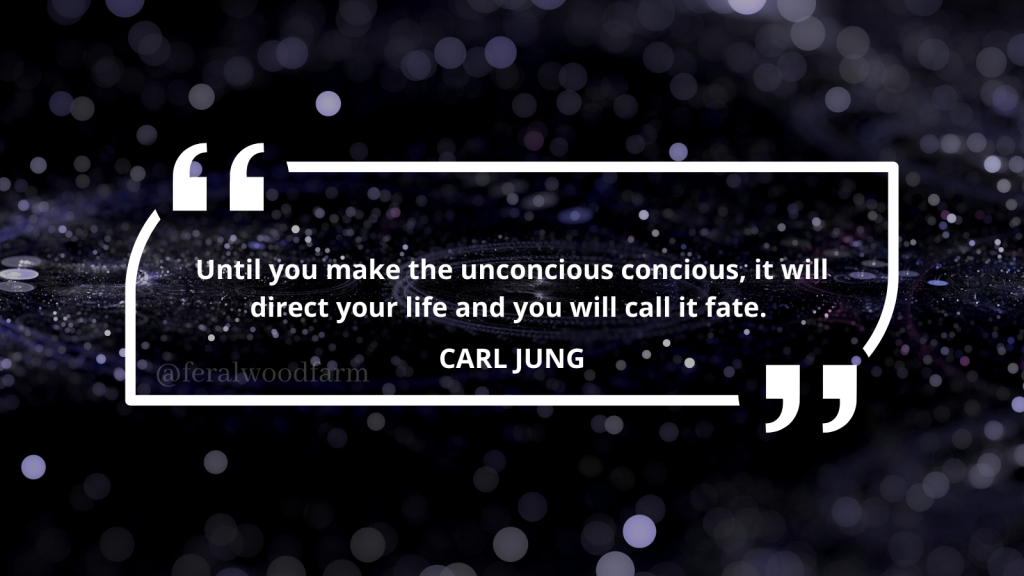
Why would you want to do Shadow Work?
Summed up, Shadow Work is there to help us try to become a better person. Shadow Work can help us accept the parts of ourselves that we dislike or are ashamed of, help to manage impulses, and allow you to better love yourself. Jung also believed that it could help “address prejudices and impulses resulting from broader social ills.” leading to an overall healthier and safer collective unconcious.
One does not become enlightened by imagining figures of light, but by making the darkness concious.
– Carl Jung
Some of the benefits that have been experienced by practicioners of Shadow Work are:
- a better sense of your emotions & feelings
- a more stable mind & ‘moodset’
- becoming more accepting of yourself, and in turn others around you
- understanding of why you have certain negative thoughts and what caused them
- healing from difficult to traverse emotional states such as grief or trauma

How to start using Shadow Work in your Practice
I do want to include a disclaimer here that not everyone may want to do Shadow Work at all….or attempt this alone! Especially if you are someone who has experienced trauma or mental health issues then you may want to first reach out to a trained professional such as a therapist.
There are a variety of ways to begin introducing Shadow Work into your spiritual practice, the most common of which is self-reflective journaling. This method of journaling involves asking yourself various questions about yourself and how you feel about things, and then further asking why you feel that way. You continue to ask the “why” until you get to a root of what might be causing that feeling or emotion. This is to help “bring to the light” these shadow parts of ourselves so that we can move forward aware of the causes, and potentially attempt to face them head-on.
Once you start becoming aware of your thoughts, feelings, and internalized “shadow”; you’ll begin to recognize it when it appears in your day-to-day life. During these moments of realization, pause and think through the same process you would normally do when journaling.
- Why do I feel this way?
- Are these feeling valid in this situation or am I being triggered by a previous experience?
- What was that experience and how is it still affecting me?
This series of questions allows you to analyze your patterns of thoughts and emotions, and understand yourself better in this way! And of course, please be patient with yourself during this process. This isn’t an easy thing for everyone to add to their daily life, and there’s no correct pace or even way to go about this. Do what works for you and remember to give yourself some grace. This is a journey, not a sprint.

5 Starter Shadow Work Journaling Prompts
Try these handy journaling prompts to start bringing Shadow Work into your daily or weekly practice!
- What emotions did you feel today? Did any seem especially strong? What triggered that emotion? Can you think of the first time you felt this way?
- What are your pet peeves? Why do they bother you?
- Describe your childhood self. How many of those traits do you still have today? What happened to the others? Are there new traits you believe you currently have? Where did they come from?
- What traits do you admire in others? Which do you dislike? Why?
- When was the last time you cried? What caused it? How does crying make you feel?
You can also find more shadow work prompts with each of my monthly Full Moon posts!
Want to share your own shadow work prompts? Share on any social media using the hashtag #feralwoodcoven or come join us on discord!
Wanting to Learn More about Shadow Work?
There are so many incredible pieces of content out there to help you learn more about Shadow Work! Check out these resources, videos, and podcasts to learn more!
Celestial Cafe Podcast

I’m one of the four cohosts for the Celestial Cafe Podcast! An esoteric & occult podcast for magical minds. We did a whole (almost 2 hour!) episode on Shadow Work that was so much fun and packed full of information. You can watch the episode on YouTube or listen on Apple Podcasts, Spotify, or Stitcher.

Another one of the amazing cohosts of Celestial Cafe, heyshadylady has put together this incredible guide for beginner’s wanting to delve into starting Shadow Work! Filled with memes, pop culture references, and incredible visuals, shady’s blog is sure to keep you informed and entertained!
Pin it for Later
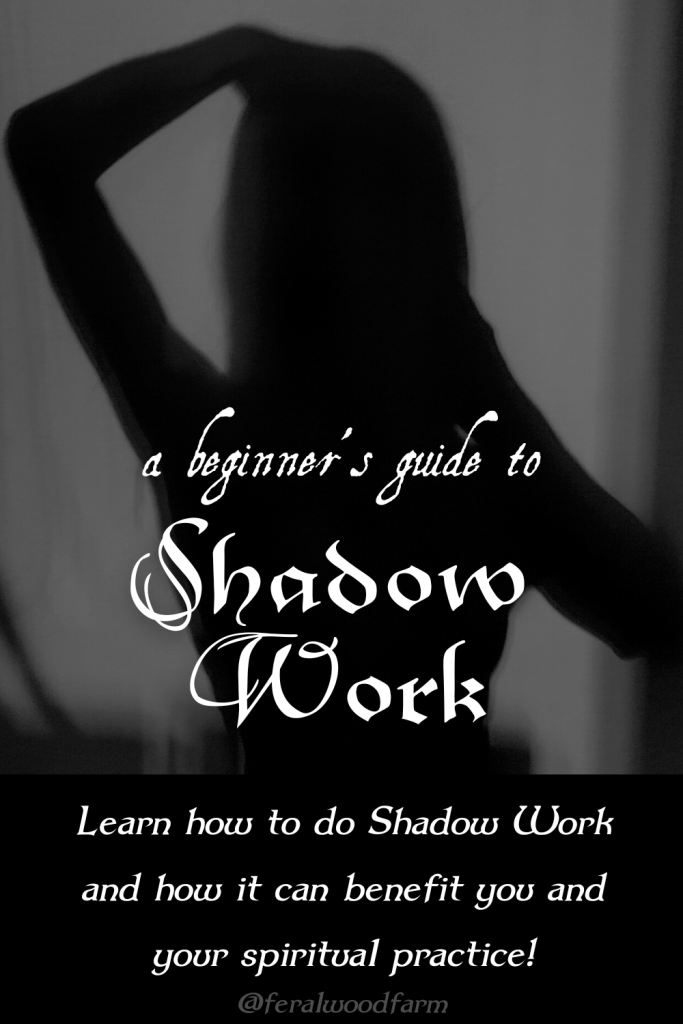

Sources
What is Shadow Work in Spirituality? – Medical News Today
Walking with Shadows: Writing Trauma, short fiction, and Jungian psychonanalysis
https://www.britannica.com/biography/Carl-Jung
International Association for Analytical Psychology
Society of Analytical Psychology – Jung’s Model of the Psyche
Carl Jung and the Shadow: Hidden Power of our Dark Side
